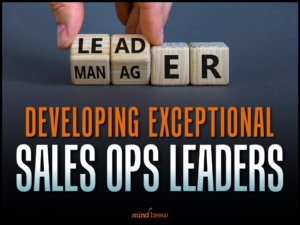I recently had the pleasure of interviewing Tom Searcy about his new book, Life After the Death of Selling. Frankly, given the rather ominous subject matter, I was expecting our conversation to be somewhat somber and solemn. But I have to say, Tom’s natural sense of humor and refreshingly frank observations made the whole interview a lot of fun!
For nearly an hour, Tom shared his perspectives on changing buyer behaviors, what these changes mean for the sales function, and how to survive and thrive as the situation continues to evolve. According to Tom, there have been a couple of major developments over the last few years that are really changing the game:
- The average number of people involved in business purchasing decisions has more than doubled. Five years ago, buying decisions typically involved just three people from the customer’s organization. Today, these same buying decisions might involve up to seven people.
- Today, a growing number of the people involved in business purchasing decisions are millennials. Of course, millennials are extremely “digital” in their interactions and have very different habits and preferences when it comes to information gathering, solution research, purchasing, etc.
Taken together, these changes in buyer behavior do not bode well for B2B companies who are dead-set on sticking with their circa-2007 sales approaches:
The sea change that’s going on right now is the kind of thing that can topple businesses. It really is that significant. I could name industry after industry where we’re seeing 30 to 50% of the players going out of business or being absorbed by other players.
So, what can Sales Ops teams do to help their organizations deal with these shifting dynamics? Well, after talking to Tom and reading his book, I see a number of areas where Sales Ops can play a crucial role:
- Disseminating information about these radical changes in buyer behavior and beating the drum about the need for meaningful change—because this isn’t temporary and ignoring these things won’t make them go away.
- Helping sales management to develop the “strategies, systems, and processes” perspectives that are so important in today’s environment—because personal charisma and hard work just aren’t enough anymore.
- Fostering greater collaboration between sales and marketing to ensure that the digital interactions are as effective as possible—because 60% of the buying process is taking place before a salesperson is even involved.
But that’s just my take. Listen to the interview, read the book, and draw your own conclusions. You’ll probably see some things that I missed. You might even draw some very different conclusions. I very much doubt, however, that you’ll conclude that things will ever be the same again.












